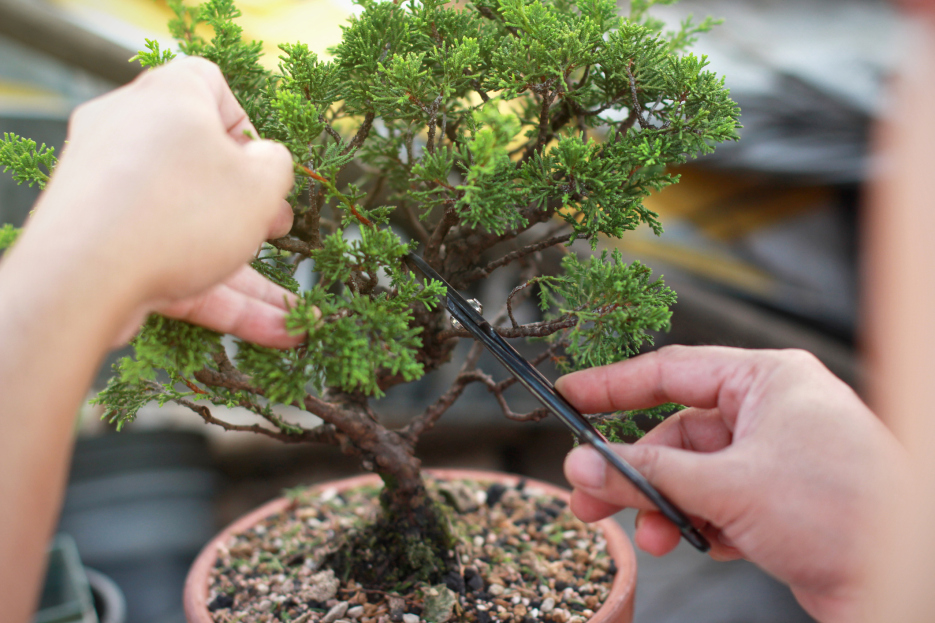
The Juniper Bonsai (Juniperus spp.) is one of the most popular and visually striking bonsai trees, admired for its elegant, twisting branches and vibrant green foliage. Known for being hardy and resilient, it’s an excellent choice for both beginners and experienced bonsai enthusiasts alike. However, to keep it healthy and maintain its miniature beauty, proper care is essential. Follow this guide to ensure your Juniper Bonsai thrives.
Juniper Bonsai trees grow best in full sun, requiring at least 5 to 6 hours of direct sunlight each day. They are best suited for outdoor environments where they can receive plenty of natural light. If you need to keep your bonsai indoors temporarily, place it near a south-facing window or use grow lights to ensure it gets adequate light exposure.
Proper watering is crucial to maintaining a healthy Juniper Bonsai, as both overwatering and underwatering can cause problems. Check the soil moisture daily, and water only when the topsoil feels slightly dry. Use soft, lukewarm water, and water thoroughly until excess moisture drains from the bottom of the pot. Avoid letting the bonsai sit in standing water, as this can lead to root rot. In particularly hot or dry conditions, mist the foliage lightly to help maintain humidity.
A well-draining bonsai soil mix is essential to prevent water retention and encourage healthy root growth. A bonsai-specific mix containing akadama, pumice, and lava rock works well for Juniper Bonsai. If repotting, choose a shallow container with drainage holes to prevent root rot. Younger bonsai trees should be repotted every 2 to 3 years, while older, more established trees only need repotting every 4 to 5 years to refresh the soil and prune the roots.
Juniper Bonsai trees are quite hardy and can tolerate a range of temperatures, though they grow best in cool to moderate climates. Ideally, keep your bonsai in temperatures between 50 and 75°F (10 to 24°C). During winter dormancy, they can withstand freezing temperatures, but it’s important to protect them from harsh frost and extreme wind. To maintain moderate humidity levels, mist the foliage occasionally, especially if you live in a dry climate.
Juniper Bonsai trees benefit from regular feeding during their active growing season, which spans from spring through fall. Use a balanced, slow-release bonsai fertilizer every 4 to 6 weeks. In winter, when the tree enters dormancy, reduce or stop fertilizing entirely. For an organic alternative, you can use fish emulsion or seaweed extract to promote strong, healthy growth.
Shaping and pruning are essential to maintain the Juniper Bonsai’s miniature, artistic form. Structural pruning should be done in late winter or early spring by removing unwanted branches to refine the tree’s shape. For foliage maintenance, pinching is preferred over cutting — gently pinch off new growth with your fingers rather than using scissors to help preserve the tree’s natural appearance. To further shape and style your bonsai, you can use bonsai wire, bending the branches gently and gradually to avoid breakage.
If you notice browning foliage, this could indicate underwatering, insufficient sunlight, or poor soil drainage. Adjust your care routine accordingly to revive the tree. Juniper Bonsai trees can also attract pests like spider mites, aphids, or scale insects. If you spot any pests, treat the tree with neem oil or insecticidal soap. Weak or drooping branches are often a sign of overwatering or a nutrient deficiency — ensure the soil drains properly and that you’re fertilizing regularly during the growing season.
Unfortunately, Juniper Bonsai trees are toxic to pets. Their foliage can cause digestive issues if ingested, so it’s important to keep the tree out of reach of pets and small children.